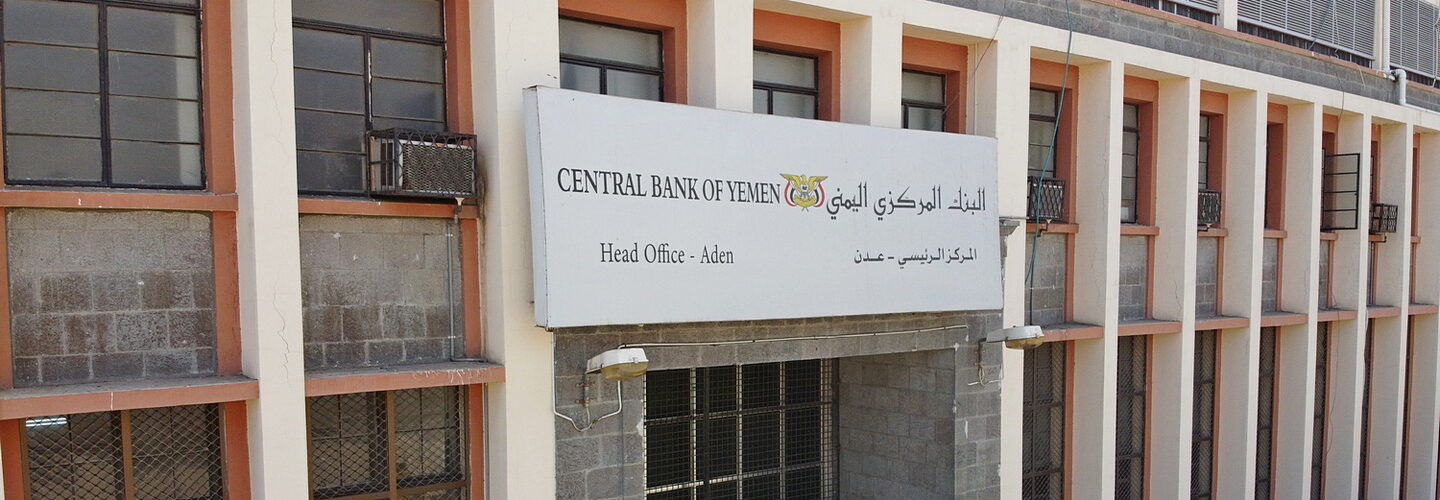
The banking and financial system remained almost absent from the Yemeni economy in its northern and southern halves until the revolution in the north and independence in the south, which is considered the first step for the emergence of the banking system in the two halves.
The Emergence of the Monetary System in the Northern Part of Yemen
One month after the outbreak of the revolution in the northern part of Yemen in 1962, the Yemen Bank for Reconstruction and Development was established, which is considered the beginning of the monetary system that was assigned the functions of the central bank and the commercial and specialized banks.
In 1964, Republican Decree No. (6) was issued to establish the Yemeni Monetary Committee and assigned it the tasks of issuing the national paper currency and financing the budget deficit, in cooperation with the Yemen Bank for Reconstruction and Development.
By Presidential Decree No. (19) of the year 1967, the Currency Control Authority was established and assigned the tasks of controlling cash and issuing import licenses.
The Central Bank of Yemen
The Central Bank of Yemen (CBY) was established on July 27, 1971, and the law granted it the right to issue currency, organize banking and credit activities, and manage the country's reserves of gold and foreign currencies, in addition to representing the government in any agreement to which the Yemen Arab Republic was a party.
The bank law included fourteen chapters, specifying the bank’s tasks, competencies, and capital at ten million riyals, owned by the government alone, to which net profits belonged.
The Emergence of the Monetary System in the Southern Part of Yemen
In 1871, the first two branches of the (Luke Thomas) Marine Agency and the Indian (Kahwaji Dinsha) Agency were opened in Aden, both of which were carrying out bank financing work in order to facilitate the activities of Indian and British companies.
And with the increasing commercial importance of the city of Aden, the major banks in India and Britain began to open branches in Aden. In 1895, the National Bank of India opened a branch in the city of Aden, and the branches of agencies and banks remained as monopolizing the financial activity in the city of Aden until the end of the Second World War. Afterwards, several Arab and foreign agencies and banks appeared as a result of the economic development of Aden city and the establishment of the oil refinery. At that time, their number reached to seven agencies and seven branches of Arab and foreign banks. For the objective of coordinating their monetary policy with their clients, those banks established their association in 1956.
The year 1964 is considered a turning point in the monetary history of the southern part, in which the South Arabian Monetary Agency was established, and as a result, Aden region was monetarily independent from the East African region.
The Bank of Yemen
After the southern part of Yemen gained its independence from the British occupation in 1967, all commercial banks operating there were nationalized under Law No. (27) of the year 1969, and all of them were then merged into one bank called "The National Bank of Yemen."
In 1972, Banking System Law No. (36) was issued to establish the Bank of Yemen as a specialized central bank that undertakes all the functions and tasks of the central bank. Among the tasks mentioned in the text of the law is the task to follow up and support the role of the banking system in development.
The Central Bank after the Yemeni Reunification
After the Yemeni reunification in 1990, the first action taken by the unified government was the issuance of Law No. (21) of the year 1991 on the unification of the two central government banks in one central bank called, "The Central Bank of Yemen," with a capital of 150 million riyals. The Bank of Yemen in Aden as well as all its branches in the southern and eastern governorates were thus considered branches of the unified central bank.
Article (5) of the law in Paragraph (1) specified the objectives of the unified central bank as follows:
- The right to issue and manage currency.
- Regulating banking and credit activities.
- Managing the state's reserves of gold and foreign currencies.
- Ensuring currency stability and achieving internal and external balance.
- Exercising any powers entrusted to it or which it performs on behalf of the government.
- Performing the task of the economic, financial, and monetary advisor to the government.












